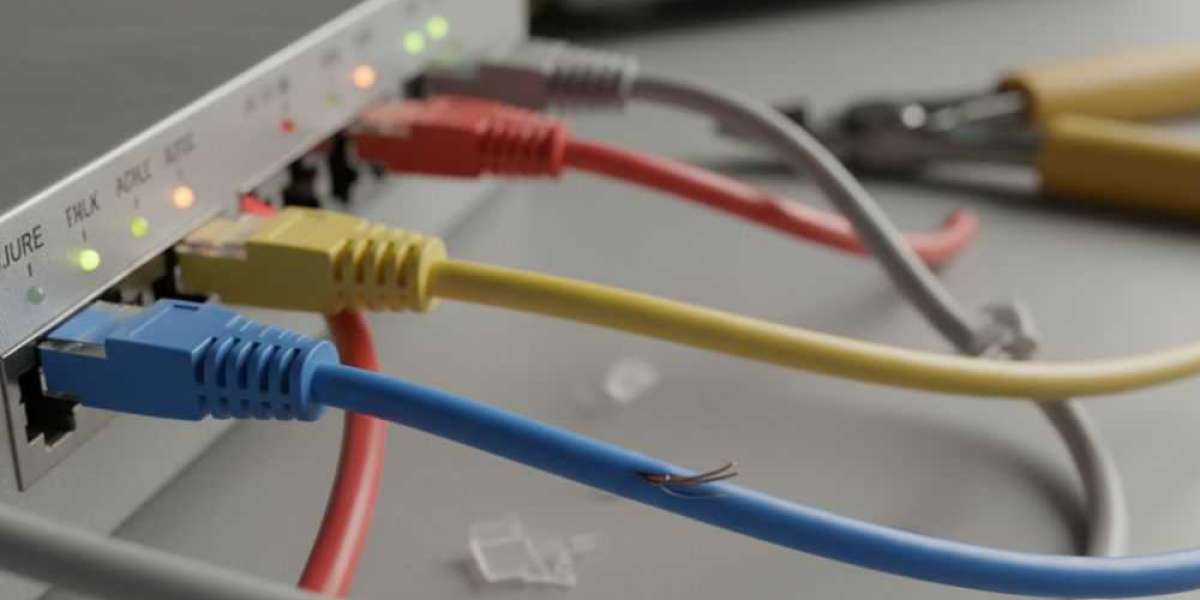Setting up a home network or office internet system often brings up one important question: how far can I run an Ethernet cable before it stops working properly? If you're planning to connect devices in different rooms or floors, understanding cable length limits can save you from headaches down the road.
The Standard Ethernet Cable Length Limit
The magic number for Ethernet cables is 100 meters or 328 feet. This is the maximum distance you can run a standard Ethernet cable without experiencing signal problems. This limit applies to most common Ethernet cables, including the popular cat5e cable that many people use for home and office networks.
Why exactly 100 meters? This distance limit comes from how electrical signals behave when they travel through copper wire. As signals move through the cable, they naturally become weaker. After 100 meters, the signal becomes too weak to maintain a reliable connection.
What Happens When You Exceed the Length Limit?
You might wonder what actually goes wrong if you run a cable longer than 100 meters. Here's what typically happens:
Slower speeds: Your internet connection won't run at full speed. Downloads take longer, streaming buffers more often, and online gaming becomes frustrating.
Packet loss: Data packets get lost during transmission. This means you'll see more errors, dropped connections, and need to resend information repeatedly.
Connection drops: Your network might disconnect randomly. These drops can happen without warning and disrupt your work or entertainment.
Poor performance: Overall network reliability decreases significantly, making the connection unreliable for important tasks.
Understanding Cat5e Cable Performance
The cat5e cable is one of the most widely used Ethernet cables today. The "e" stands for "enhanced," and it offers better performance than the older Cat5 standard. A cat5e cable can handle speeds up to 1 Gigabit per second (1000 Mbps) at the full 100-meter distance.
This cable type works great for most home and small business needs. It handles streaming, gaming, video calls, and regular internet browsing without breaking a sweat. The cat5e cable also costs less than newer cable types, making it a budget-friendly choice for many people.
How to Extend Your Network Beyond 100 Meters
What if you need to connect devices that sit more than 100 meters apart? Don't worry - you have several options:
Use a Network Switch
A network switch acts like a repeater station for your signal. You can place a switch at the 90-meter mark, then run another cable from there. This essentially resets the distance counter, giving you another 100 meters to work with. You can chain multiple switches together if needed.
Install a Network Extender
Network extenders boost your signal strength and allow longer cable runs. These devices plug into power outlets and regenerate the network signal, pushing it further along the line.
Consider Fiber Optic Cable
For really long distances, fiber optic cable is your best friend. Unlike copper cables like cat5e cable, fiber optic cables can run for kilometers without signal loss. They're more expensive and require special equipment, but they're perfect for connecting buildings or running cables across large properties.
Use Powerline Adapters
Powerline adapters send network signals through your existing electrical wiring. While not as fast as direct cable connections, they work well when running new cables isn't practical.
Factors That Affect Cable Performance
Even within the 100-meter limit, several factors can impact how well your cat5e cable performs:
Cable quality: Cheap, poorly made cables cause more problems than quality ones. Invest in good cables from reputable manufacturers.
Environmental interference: Electrical interference from power cables, fluorescent lights, or motors can degrade your signal. Keep Ethernet cables away from these sources when possible.
Cable damage: Bent, kinked, or crushed cables don't perform well. Handle cables carefully during installation and avoid sharp bends.
Connector quality: Bad connections at the ends cause signal problems. Make sure all connectors are properly crimped and firmly plugged in.
Temperature extremes: Very hot or cold environments can affect cable performance. Use outdoor-rated cables for exterior installations.
Practical Tips for Running Ethernet Cables
Here are some helpful tips when running your cat5e cable or any Ethernet cable:
Measure twice, buy once: Measure your actual route carefully before buying cable. Add 10-20% extra length for routing around obstacles and mistakes.
Avoid parallel runs with power cables: If you must cross power cables, do so at 90-degree angles to minimize interference.
Use cable management: Proper cable management protects your cables and makes troubleshooting easier later.
Test your connection: After installation, test your network speed to ensure everything works correctly.
Label your cables: Mark both ends of each cable. This simple step saves huge amounts of time during troubleshooting.
Leave some slack: Don't pull cables tight. Leave a little slack at both ends for future adjustments.
When to Upgrade Beyond Cat5e Cable
While cat5e cable handles most needs perfectly well, sometimes you need more. Consider upgrading to Cat6 or Cat6a cables if you:
- Need speeds faster than 1 Gigabit per second
- Want to future-proof your network
- Experience significant electrical interference
- Run a professional network requiring higher performance
These newer cables cost more but offer better shielding and higher speeds over the same 100-meter distance.
The Bottom Line
You can safely run an Ethernet cable up to 100 meters (328 feet) without problems. This applies whether you're using a cat5e cable or most other common Ethernet cable types. Stay within this limit, use quality cables, and follow proper installation practices for the best results.
If you need longer distances, use network switches or other extension methods to maintain signal quality. With proper planning and the right equipment, you can create a reliable network that covers your entire space without signal problems or performance issues.
Remember, the 100-meter rule exists for good reason - it ensures your network runs smoothly and reliably. Respect this limit, and your network will serve you well for years to come.
Sources: https://techymantraa.com/how-to-troubleshoot-common-ethernet-cable-issues/
https://logcla.com/blogs/972794/What-are-the-4-Types-of-Network







